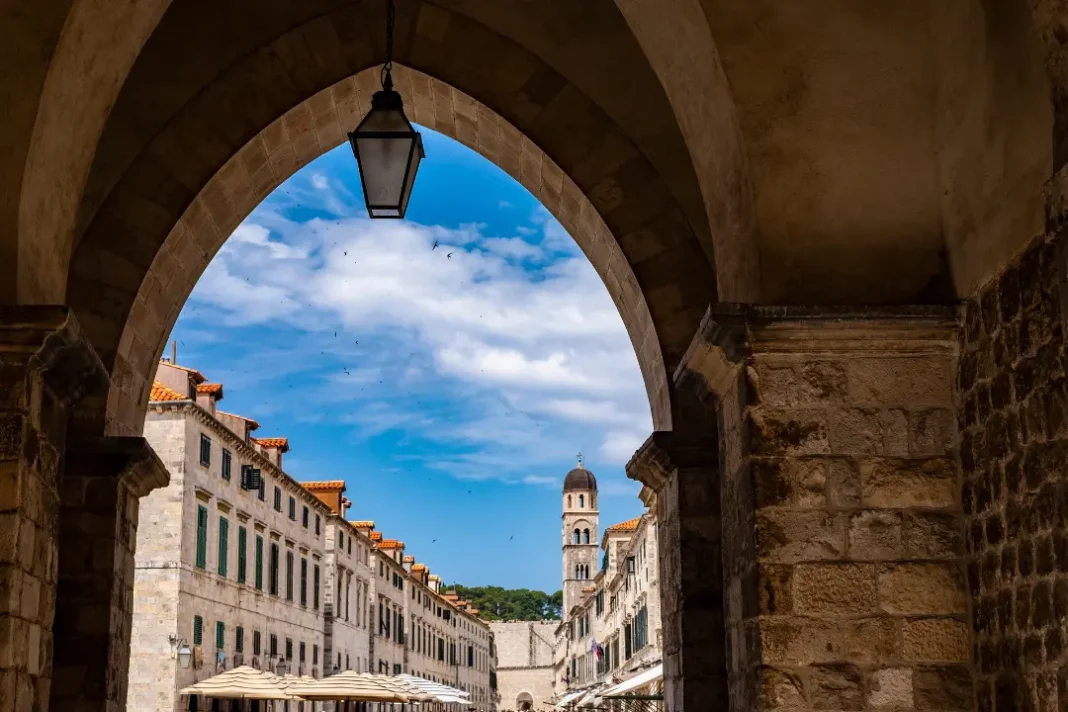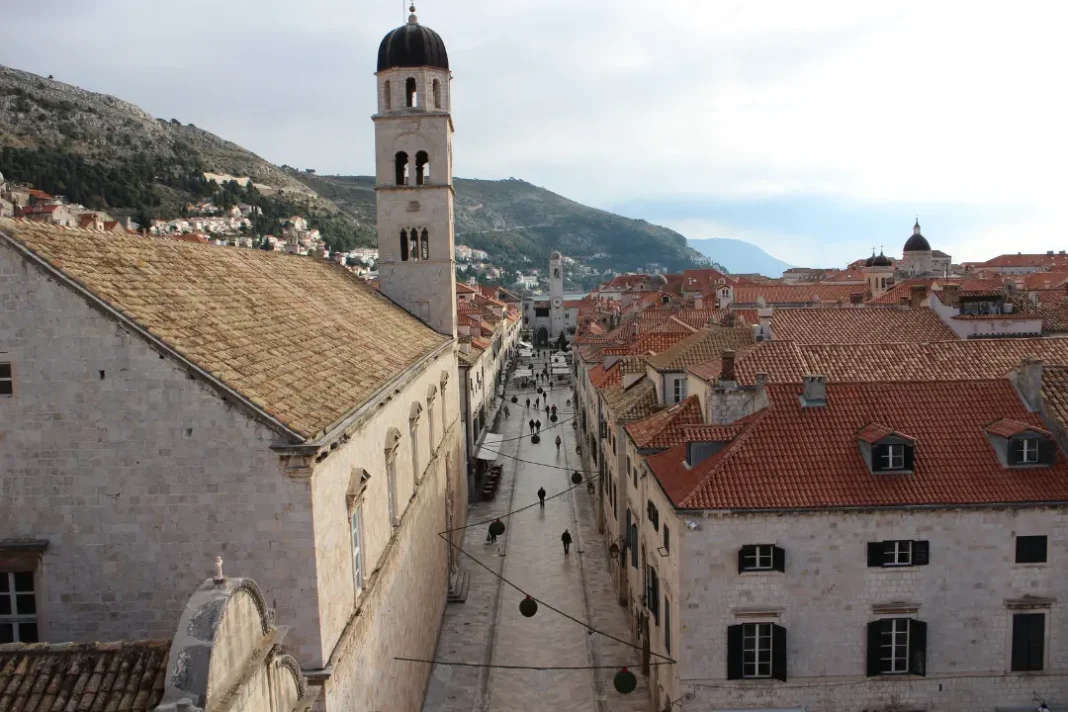Dubrovnik, today one of the world’s most beautiful coastal cities, hides behind its shining stone walls a powerful story of resilience and survival. While millions of travelers come to admire its baroque architecture, crystal-clear sea, and cinematic charm, few truly understand how close this city once came to destruction.
The early 1990s marked one of the darkest chapters in Dubrovnik’s long and proud history. As Yugoslavia disintegrated, Dubrovnik — a city known for peace, culture, and diplomacy — became a battlefield. Yet from the ashes of war, it rose stronger than ever, becoming a global symbol of restoration and cultural endurance.
This is the story of Dubrovnik during the war and the breakup of Yugoslavia — a story worth hearing and remembering.
Before the War: A City of Peace and Beauty
Before the 1990s, Dubrovnik was a peaceful jewel of the Adriatic. Its history stretched back more than a thousand years, once as the proud Republic of Ragusa, an independent maritime power known for its diplomacy and trade.
By the 20th century, Dubrovnik had become part of socialist Yugoslavia — a federation of six republics led by Josip Broz Tito. Life in Dubrovnik was relatively calm and prosperous, especially thanks to tourism. By the 1980s, the city welcomed hundreds of thousands of visitors each year, known for its tolerance, multiculturalism, and elegant charm.
But when Tito died in 1980, nationalist tensions began to rise across Yugoslavia. By the early 1990s, the unity of the federation was crumbling.
The Outbreak of the War
In 1991, Croatia declared its independence from Yugoslavia. Soon after, fighting erupted across the country as the Yugoslav People’s Army (JNA), dominated by Serbian leadership, attempted to prevent the breakup.
Although Dubrovnik had no military bases or strategic importance, it became a target. On October 1, 1991, the siege of Dubrovnik began. The JNA and Montenegrin forces surrounded the city by land and sea, cutting off electricity, water, and communications.
The attack shocked the world. How could a UNESCO World Heritage Site, a city of art and diplomacy, be bombed in modern Europe?
The Siege and the Bombardment
For nearly eight months, Dubrovnik was under siege. The city’s defenders — mostly local volunteers — were vastly outnumbered and poorly armed, but their spirit never wavered.
On December 6, 1991, Dubrovnik suffered one of the heaviest attacks. Over 2,000 shells rained down on the Old Town, setting buildings on fire and damaging over two-thirds of its famous red rooftops. The Rector’s Palace, Sponza Palace, and Franciscan Monastery were hit. Yet the ancient city walls — symbols of Dubrovnik’s strength — stood firm.
Despite the destruction, the residents refused to abandon their home. They hid in basements, shared scarce food and water, and helped one another survive.
International journalists documented the siege, and their reports brought Dubrovnik’s tragedy to global attention. UNESCO and the world community condemned the attacks, calling them an assault on cultural heritage and humanity itself.
Liberation and the End of the Siege
In May 1992, Croatian forces managed to lift the siege and regain control of the surrounding area. The war, however, continued elsewhere in Croatia and Bosnia until the Dayton Agreement in 1995.
Dubrovnik emerged from the conflict scarred but unbroken. Out of 824 historic buildings in the Old Town, more than 600 had been damaged. Yet within months, restoration work began — led by local artisans, architects, and UNESCO experts.
The effort to restore Dubrovnik became one of the most successful examples of cultural reconstruction in modern history. Each replaced roof tile, carefully crafted to match the original, became a symbol of hope.
Rebuilding a City and Its Spirit
The post-war years were not easy. Tourism, once the lifeblood of Dubrovnik, had vanished. The economy struggled, and emotional wounds ran deep. But Dubrovnik’s citizens never gave up.
By the early 2000s, the Old Town had been completely restored, its marble streets shining once again. In time, the world returned — first a few curious travelers, then cruise ships, and finally, international film crews.
When HBO’s Game of Thrones chose Dubrovnik as the setting for King’s Landing, millions saw the city not as a symbol of destruction, but as a symbol of grandeur and survival.
Dubrovnik Today: Memory and Meaning
Today, Dubrovnik stands proud — not only as a tourist paradise, but also as a living monument to peace. The scars of war are still visible if you know where to look. At the War Photo Limited Gallery, visitors can see powerful images documenting the conflict. The Homeland War Museum, located in Fort Imperial on Mount Srđ, offers a panoramic view of the city below and a moving tribute to those who defended it.
Walking through the Old Town, it’s hard to imagine that these polished stones once echoed with explosions. Yet that contrast is what makes Dubrovnik so unique — it’s a place where beauty and tragedy coexist, where every wall tells a story of resilience.
Understanding Dubrovnik Through Its History
To truly understand Dubrovnik, you need to go beyond its picture-perfect façades. The city’s soul is shaped by its history — from centuries of diplomacy to the horrors of war and the triumph of rebuilding.
A local Dubrovnik guide can help you uncover the layers of this history:
- Hear firsthand stories from the siege and what life was like under bombardment.
- Visit key war sites and learn about the restoration process.
- Discover how the breakup of Yugoslavia shaped modern Croatia.
History is not just something to read about — in Dubrovnik, it’s something you can feel.
A City That Chose Life Over Hate
Perhaps the most remarkable thing about Dubrovnik’s story is its refusal to give in to bitterness. The city chose reconciliation, culture, and life over revenge. Today, it welcomes visitors from all over the world, including those from the very regions involved in its destruction.
Dubrovnik’s greatest victory is not military — it’s moral. It’s a triumph of civilization over chaos, of art over violence, of humanity over hate.
Plan Your Visit: Learn, Remember, Experience
If you’re planning to visit Dubrovnik, take the time to look beyond the postcard views. Explore the museums, the fortresses, and the memorials. Walk the same walls that once shielded the city from fire, and let your guide bring the past to life with stories of courage and hope.
Book a local Dubrovnik guide today and experience a city that survived war, rebuilt itself, and now shines brighter than ever — not just as a destination, but as a symbol of peace and resilience.


